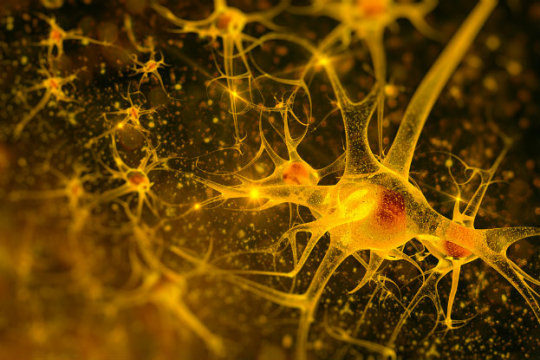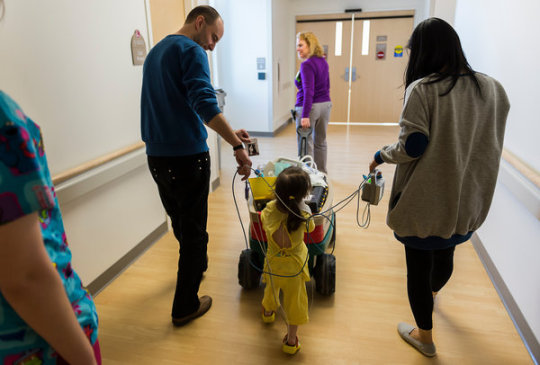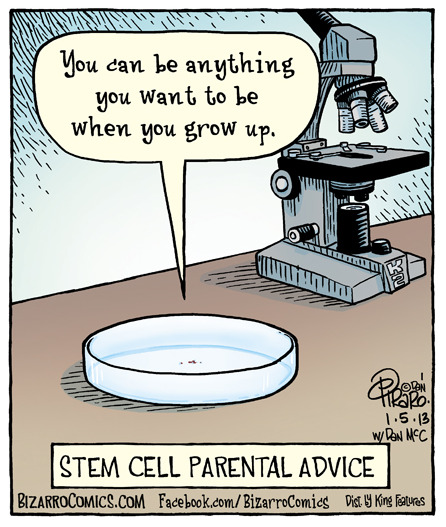Text
Last post here, guys.
Well this has been fun. The purpose of this blog was a project for biology, and I've had a lot of fun in learning so much and getting new followers.
And I also hope you believe in stem cells!
-Ana, out.
2 notes
·
View notes
Text
Bibliography
Goldthwaite, Charles A. “The Promise of Induced Pluripotent Stem Cells (iPSCs)”, National Institutes of Health (NIH), December 9th 2011, online article, October 29th 2014
NA, “Stem Cells Basics”, National Institutes of Health (NIH), April 28th, 2009, online PDF format document, October 29th 2014
Wilding, Alex “Buddhists/ embryonic stem cells”, AllExperts, 23/5/2011, online article, October 29th 2014
Frazier O’Brien, Nancy “Embryonic Stem-cell research immoral, unnecessary, bishops say”, CNS Orlando, ND, online article, October 29th 2014
NA, “Stem cells and Parkinson’s disease”, The Michael J. Fox Foundation for Parkinson’s research, ND, online article, October 29th 2014
Caulfield, “Stem Cell Research and Parkinson’s Disease”, Parkinson Society Canada, ND, online research PDF document, October 29th 2014
Agnew, Bruce, “Politics of Stem Cells- Legislative uncertainties hinder research in the U.S.”, Genome News Network, J. Craig Venter Institute, 21st of February 2003, online article, 18th of November 2014
0 notes
Text
Does stem cell research have anything- ANYTHING to do with politics?
Well, to answer my dramatic question, I would say that stem cell research has something really important to do with politics. Politics and economy, since the government has a lot of say in the economic system of a particular country. Generally speaking, the impact of stem cell research on politics is pretty great; it's also something like the Enlightment period in history. This topic has become very popular over time, and people have seen that a lot of treatments have had positive results.
I’m guessing that the impact of stem cells on politics is that it has influenced a lot of peoples’ lives. It has saved lives; and this is a reason for the government to support them. To earn peoples’ sympathy and also, if we think about it logically, stem cell research and development (culture) can get a lot of money. Since growing them takes a long time and they are hard to acquire, selling them to other labs is a good option for earning more money. Basically, more money can be earned than rather invested.
So, to conclude, I think that stem cell research has a great impact on politics; it can help get more money but also a lot of sympathy for caring about peoples’ health and well-being.
One disadvantage, though, is the fact that ethical groups that do not agree with further stem cell research might go against the government. A riot might happen and this might lead to a lot of unrest.
I'm actually hoping for the further research of stem cells, I think that they have great potential in the future.
0 notes
Text
Stem cell research-- religious responses?
Ethical groups have talked about this issue and two examples I chose are the Buddhists and Catholics. The Catholic Church absolutely does not approve the further research of stem cells because they find it useless and an innocent life is taken away from them. Buddhists, on the other hand, they claim that they don’t have a say. They believe that as long as we are driven by compassion in our actions, it’s alright. They also don’t have a specific “rule” that forbids it; so from the Buddhist point of view stem cells research is acceptable.
4 notes
·
View notes
Text
Parkinson's Disease... how can stem cells help?
Induced pluripotent stem cells are used in the “curing” of Parkinson’s disease. Dopamine- producing cells are necessary in the brain, because due to this disease people lack these dopamine-producing cells. There are many symptoms that are mostly related to the kinetic abilities.
There is no cure for Parkinson’s. Currently these symptoms can be ameliorated with medication that provide dopamine or copy the effect of the dopamine in the brain. There is also brain surgery; also called “deep brain stimulation” that can slow the disease more than medication.
0 notes
Text
Transdifferentiation
-when an unspecialized cell differentiates to another type of cell that was not expected as a final outcome.
-this phenomenon has been seen in the laboratory.
-only seen in adult stem cells.
0 notes
Link
Researchers at the Cedars-Sinai Heart Institute have found that injections of cardiac stem cells might help reverse heart damage caused by Duchenne muscular dystrophy, potentially resulting in a longer life expectancy for patients with the chronic muscle-wasting disease.
1 note
·
View note
Link
Scientists at Hiroshima University established induced pluripotent stem (iPS) cells from the fibroblasts of Werner Syndrome patients.
2 notes
·
View notes
Text
So ummm... induced pluripotent stem cells are what. Just short and neat.
There is one more type of stem cells; this one was developed in the lab.
These cells are “Induced Pluripotent” stem cells. These cells are adult stem cells that are genetically mutated to be embryonic. The method of achieving this is by a virus. This virus changes the genetic information of the cell and turns it into an embryonic stem cell.
That’s why they are called “induced”.
1 note
·
View note
Text
Next in the line, Adult stem cells.
“Adult” stem cells got that name because they are found in mature tissues. The unspecialized cells live among the specialized ones in a specific tissue or organ. They can be found in a lot of places: brain, bone marrow, blood vessels, muscles, skin, teeth, gut, liver, heart, testis, ovarian epithelium.
Adult stem cells can differentiate into:
Hematopoietic - blood cells;
Mesenchymal - bone cartilages and support blood formation on the bones;
Neural - neurons and non-neural cells (astrocytes and oligodendrocytes);
Epithelial - absorptive, in locations deep in the digestive tract;
Skin - follicular cells and keratinocytes.
Adult stem cells can differentiate into many functions, like the embryonic stem cells, but they are limited. Their number and potential is smaller than the embryonic ones; that makes them harder to get. If they are harder to find, removing them from the body can be a bad decision because they wouldn’t survive and carry out their normal processes. Both of them share some similarities; such as both being used in cell-based therapies, both of them having the potential to become a specialized type of cell. What makes them different is the fact that they come in a different number and the cell types they can become.
0 notes
Text
Embryonic stem cells
This type of stem cells comes from early preimplanted embryos; the embryo didn’t attach itself to the uterus wall. But let’s not get confused or terribly horrified here! These embryos are grown in labs, not in actual female bodies!
Embryonic stem cells are pluripotent; this means that they have a limited number in the body. But how are they stimulated to differentiate?
Generally, embryonic stem cells differentiate to become a part of all functions: heart muscle cells, blood cells, nerve cells (neurons), skin cells, muscle cells, etc. because they are pluripotent. As I already explained, there are internal and external factors (triggers) that determine the final outcome. In the lab, these triggers can be manipulated in order to get a desired type of cell, which is by changing the chemical composition in the surrounding environment of the cell, modifying cell’s DNA by inserting other genes.
Embryonic stem cells are used as a cure (not permanent cure) to diabetes (type 1), traumatic spinal cord injury, Duchene’s muscular dystrophy, heart disease, vision and hearing.
0 notes
Text
Let Ana tell you some basic stuffs about stem cells, alright?
2 kinds of stem cells >embryonic >adult Some would argue that there is a third official type, induced pluripotent. But induced pluripotent stem cells are made in lab, not found directly in nature.
So yeah I wanted to let you know about this, but ya know this is pretty logical so... yeah.
0 notes
Photo
I'm hungry now.

Today scientists cooked the first stem-cell-derived hamburger. Sounds gross, but then think about that image at the beginning of “Under the Dome” where the cow gets sheered in half and its blood and guts are oozing out, and remember that’s how real meat basically gets made. So maybe braiding together petri-dish fibers until you get a patty is not so gross after all. I’m actually really excited about this.
Check out the images of making and cooking the first humane beef here.
1K notes
·
View notes
Photo

Scientists have converted human skin cells into brain cells
A number of current medical treatments involve a process in which one type of human cell is converted to another, such as stem cells being converted to skin cells. During this process, there’s a stage called the stem cell stage, where the original cells are at risk of converting into multiple types of cells, rather than the single, desired type. But now a team of scientists from Washington University in the US has figured out how to avoid the stem cell stage altogether, and have successfully converted skin cells directly into functioning brain cells.
The team produced a specific type of brain cell called a medium spiny neuron. These nerve cells are important for controlling movement of the body and are the main cell type affected inHuntington’s disease.
The findings, which are published in the journal Neuron, report that the cells were implanted in the brains of mice, and survived for at least six months.
"Not only did these transplanted cells survive in the mouse brain, they showed functional properties similar to those of native cells," said developmental biologist and lead author of the study, Andrew S. Yoo, in a press release. ”These cells are known to extend projections into certain brain regions. And we found the human transplanted cells also connected to these distant targets in the mouse brain. That’s a landmark point about this paper.”
The team grew the human skin cells in an environment that resembled that of brain cells. Next they exposed the cultured cells to two microRNAs - small non-coding molecules - that unravelled the DNA needed for brain cells. The next hurdle was to reprogram the cells into specific medium spiny neurons, and this was done by exposing them to transcription factors - molecules that control the activity of a gene.
The team is now reprogramming cells taken from patients with Huntington’s disease into medium spiny neurons, using this method.
This new approach presents the possibility of using a patient’s own cells in regenerative medicine, drastically reducing the risk of the cells being rejected by the immune system.
Source: EurekAlert
1K notes
·
View notes
Photo

Bone marrow, (SEM).
Bone marrow is the site of blood cell production. Differentiating white blood cells (green), part of the body’s immune system, and red blood cells, which carry oxygen around the body, are seen amongst reticular fibres (yellow).
(Picture by http://www.treccani.it/)
2K notes
·
View notes
Photo

Born Without a Windpipe, Now Breathing A Full Life
Hannah Warren has become the youngest person to ever receive a bioengineered tissue transplant, receiving a windpipe created from her own stem cells grown around a special plastic scaffold. This “proto-windpipe” is then recognized by the body, and (through processes that aren’t entirely clear) a fully developed windpipe, complete with the many layers of specialized cells, is formed with the scaffold and stem cells as its guide.
I’ve posted about these bioengineered transplants in older patients before, but I think this captures the amazement we all feel:
Dr. Macchiarini described a look of befuddlement on the child’s face when she realized that the mouth tube was gone and she could put her lips together for the first time. “It was beautiful,” he said.
Yes. Beautiful, indeed. Way to go science.
(via New York Times)
2K notes
·
View notes
Photo

Stem cells can be used to generate all kinds of tissue—even bone! Learn how scientists are growing bone from stem cells here »
Comic by Dan Piraro.
4K notes
·
View notes